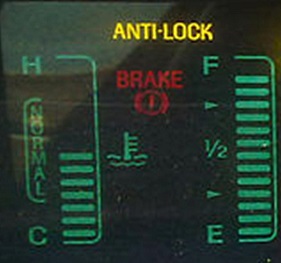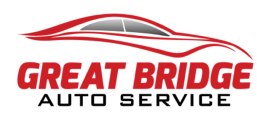Brake fluid is a non-compressible substance that allows the force exerted on the brake pedal to be transferred to the brake system causing the vehicle to stop. Pretty important job for a fluid to have, huh?
Brake fluid is also a hygroscopic fluid, meaning it absorbs water. Water does not play nice with your brake system’s metal components by causing them to rust and deteriorate. It’s the rust and broken rubber bits within the braking system that degrade your brake fluid making it less effective.
We at Great Bridge Auto Service know that your brakes have a lot riding on them – you and family and friends. Whether it’s a flush or brake service, you can feel confident in our technicians’ expertise.
Common Brake System Questions
How often should I get a brake flush?
That’s a big “depends”. Some manufacturers say 20,000 miles, others 150,000 and others don’t even put a brake flush on their maintenance schedule.
In our opinion, the color of the brake fluid is an important factor. Brown or black fluid is degraded. Because brake fluid is hygroscopic, it will reach a point where it can no longer hold any more water. When this happens, your brakes will fail.
We do recommend getting a brake flush whenever you are having other brake work done. This gives a small “break” in price.
How does brake fluid get contaminated?

Brake fluid is contained in a closed system, so it doesn’t make sense that it can get contaminated. Remember, brake fluid is a water hungry, hygroscopic fluid. Overall, this is a very important characteristic because it absorbs water rather than letting it settle in brake lines causing them to rust. As mentioned earlier, brake fluid does have a saturation point, and that’s where its anti-corrosive additives become less effective.
So where does the water come from?
- Water vapor can enter through hydraulic lines, brake lines and piston seals through microscopic openings
- Condensation is generated in the caliper and brakes lines when temperatures repeatedly increase and cool
What fluid should be used if I need to add brake fluid?
First of all, if you need to add fluid that is a sign that there is a problem with your brake system and it should be inspected. If you do add fluid, there a few things you should know.
- All brake fluids are NOT the same. Some are glycol based (DOT 3, DOT 4 and DOT 5.1) and some are silicon based (DOT 5). You should never mix glycol and silicon based fluids together. So that means:
- DOT 4 fluid can be mixed in original DOT 3 fluid; however, DOT 3 fluid should not be mixed in original DOT 4 fluid
- DOT 5.1 can be mixed in original DOT 3 or 4 fluid; however, DOT 3 or 4 fluid should not be mixed with original DOT 5.1
(Basically, always use the same DOT number as the original or use the higher glycol DOT number than the original.)
- NEVER add DOT 5 fluid to DOT 3, DOT 4 or DOT 5.1
- If you add fluid, never hold onto the extra leftover. Because it is hygroscopic, it will absorb water from the air left in the container contaminating the brake fluid.
